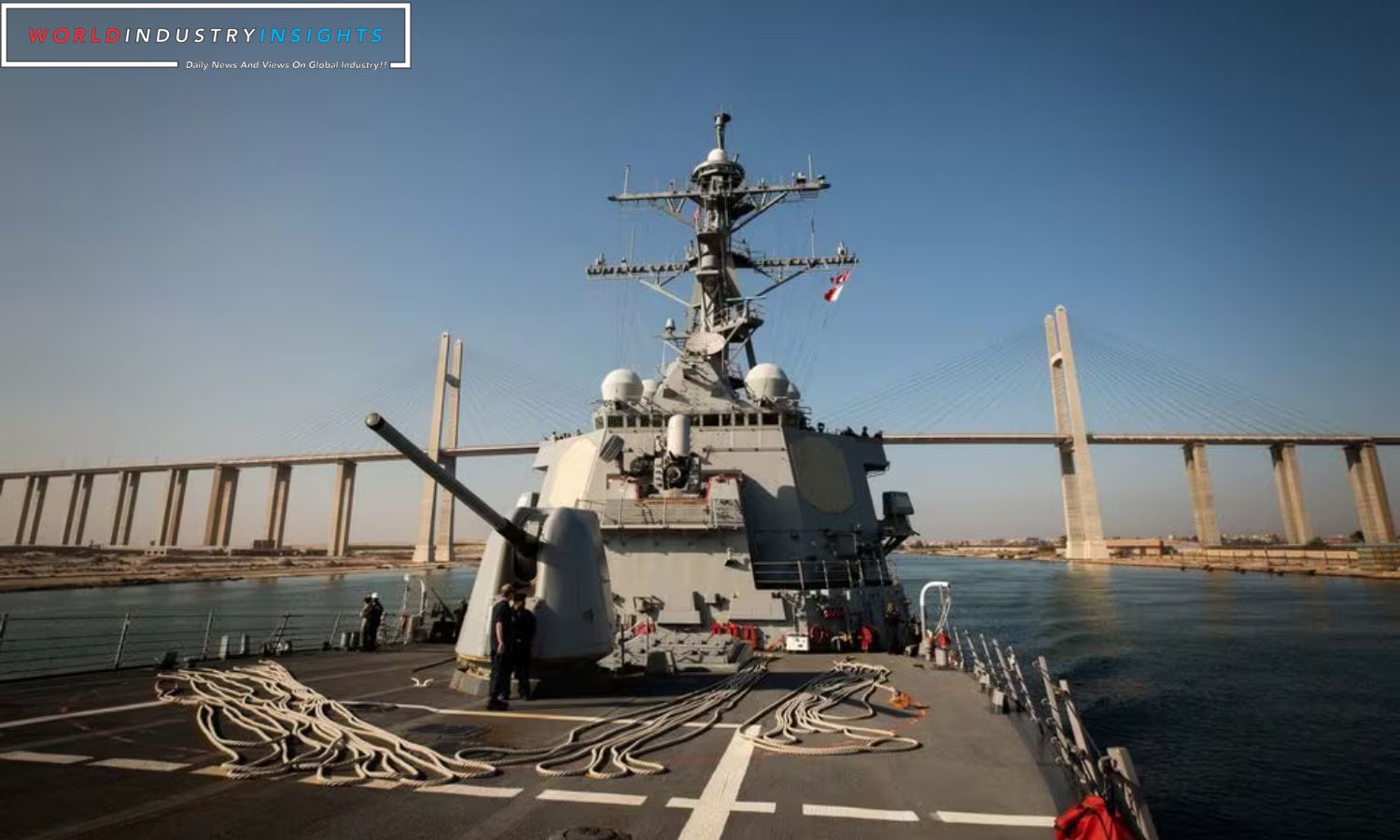Red Sea Tensions Rock Markets: Sunday’s attack on an American warship and commercial vessels in the Red Sea poses a renewed threat to investor confidence, potentially complicating the recent market rally that propelled U.S. stocks to a fresh closing high for the year.
The Pentagon acknowledged reports of the attacks, and Yemen’s Houthi group claimed responsibility for drone and missile strikes on two Israeli vessels in the same area. Simultaneously, the U.S. conducted a self-defense strike in Iraq against an “imminent threat” at a drone staging site.
Concerns mount that the Israel-Hamas conflict could escalate into a broader and more complex confrontation involving the U.S. and regional players like Iran. In Asian trade on Monday, S&P 500 futures dipped slightly, Brent crude futures rose by 0.7% to $79.40 a barrel, and gold reached a record high of $2,111 an ounce.
Quincy Krosby, Chief Global Strategist at LPL Financial, warned that an expanding conflict might prompt some investors to capitalize on recent stock gains. The S&P 500’s nearly 9% rise in November and its nearly 20% surge for the year could face pressure if geopolitical tensions escalate further.
Also Read: Markets Cheer as Investors Bet on an Extended Fed Pause
Past instances of heightened geopolitical tensions have historically driven investors toward safe havens like gold, Treasuries, and the U.S. dollar. An escalating Middle East conflict could also impact oil prices, which have experienced recent declines.
Phil Orlando, Chief Equity Market Strategist at Federated Hermes, suggested that rising tensions in the region might push West Texas Intermediate crude prices to $80-$90 per barrel.
As investors navigate potential market influences in the coming weeks, factors like the U.S. employment report due on Friday and the Federal Reserve’s monetary policy meeting on Dec. 12-13 will be closely watched. The ongoing conflict adds another layer of uncertainty, with geopolitical developments having the potential to influence stock movements.
Orlando acknowledged the potential for a temporary dip in the S&P 500 due to increased geopolitical tensions but expressed confidence in the index ending the year at 4,600, emphasizing the resilience of the market amid uncertainties.
Our Reader’s Queries
What is the significance of the Red Sea trade?
The Red Sea route holds significant importance as it facilitates almost 15% of the world’s seaborne trade. This includes a substantial 8% of global grain trade, 12% of seaborne-traded oil, and 8% of the world’s liquefied natural gas trade. According to Forgione, around 30% of global consumer goods and container shipping passes through Suez, making it a crucial trade route.
What is happening in Red Sea?
Yemen-based Houthi rebels have been attacking commercial vessels transiting the Red Sea to the Suez Canal, causing global shippers to rethink their transportation methods. This is not the first time that global supply chains have been disrupted due to such attacks.
What is Red Sea attacks?
Rebel forces backed by Iran are ramping up their assaults on container ships traversing the Red Sea. These attacks are specifically aimed at high-value carriers on a vital shipping route, which could potentially cause disruptions in the supply chain. NBC News’ Christine Romans has shed light on the possible impact of these attacks on the U.S. supply chain of goods, as ships may have to take alternate routes due to safety concerns.
What is the Red Sea known for?
The Red Sea boasts some of the planet’s most scorching and saline seawater. As a vital link between Europe and Asia, it is one of the busiest waterways globally, thanks to its connection to the Mediterranean Sea through the Suez Canal. Interestingly, the sea’s name comes from the striking colour shifts that occur in its waters.


